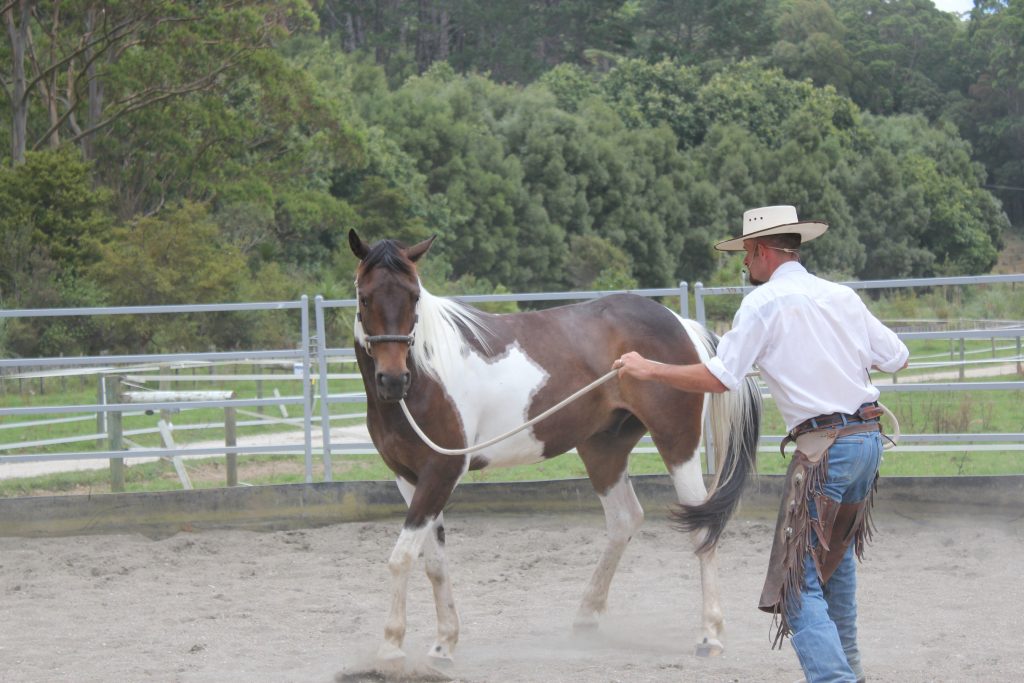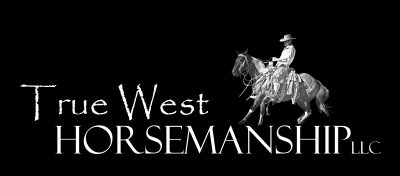As a young fellow of 16, I learned a valuable lesson from a flighty Quarter Horse filly, the first horse I ever started (broke-in). Finding she was a little high-strung and not knowing any better, I kept things quiet and easy around her and really took my time in the training process.
Of course, this is a good way to start with a horse that is more sensitive, but the danger lies in trying to make progress while maintaining that unrealistic approach. She eventually learned to accept the saddle, bit, and rider, but only at a certain level of “life” or pressure. If something unexpected or out of her small comfort zone occurred, she would come unglued and either take off or start bucking. The end result was a horse that was quiet as long as everything else was. But that’s not real life. By doing this, we may be trying to be kind but we are actually setting them up for failure.
Without us digging deeper and helping to build confidence, the flighty horse will be just that, perhaps for the rest of his life. At the very least, it will take a considerable amount of time and be quite dangerous to try to get him better slowly by trial and error or by trying to avoid any circumstances that would challenge him. This will most often result in situations out of our control that tend to confirm his fear and lack of confidence in us as leaders.
If you back off when you’ve asked him to try something and he becomes “reactive”, you’ve rewarded the wrong behavior. You may need to adjust the way you’re asking or the amount of “life” or pressure you’re using, but it’s always best to get a “try” from him towards what you were asking, so that you can reward the correct thing (“correct” from our point of view; “release” or comfort from the perspective of the horse).
When the “reaction” stems from an outside source, it is important for you as his leader, to not also become “reactive”. Sometimes it’s easy to get jumpy or nervous when your horse is, whether the cause is another rider, a foreign object or inclement weather. But a high-strung horse needs a confident rider who’s firm, but also fair and consistent. All too often, the rider gets tense and is in survival mode as much as the horse. Or if not, the other tendency is to just pull back on both reins – effectively saying “don’t” to a horse that probably feels like it needs to be moving. In order for the horse to gain confidence in new situations, it is very helpful if the rider also has a soft “feel” and precise timing in hands, seat and legs in order to give positive direction and bring the mind of the horse back to “response”.
I believe it is a mistake to not teach horses to calmly and safely handle a variety of situations with differing levels of pressure. If we tiptoe around them all the time and never ride like we might have to get there quickly or try something in spite of distraction or uncertainty, then we are probably setting them up for a false reality. Consequently when something unexpected (to them, or maybe you, as well) happens, there is a real potential for a dangerous situation because the horse has never been shown how to handle things outside his comfort zone and trust you or come back to Response in spite of his fear (there are a number of videos addressing this in my Online Video Library at https://truewesthorsemanship.com/video-landing/).
When digging a little deeper to address this, the flighty horse needs clear communication and well-timed release to help build confidence; otherwise it is very easy to just be constantly confirming his fear of everything. Too much pressure and/or poor timing of your release can make a nervous horse into a jumpy, tight-wound, ticking time-bomb. So there are two sides to this coin – the flighty horse like my filly that has never been shown how to be responsive in spite of trouble (and in the process developing a bigger comfort zone) or the sensitive horse that has been over-exposed and pressured too much without meaning or finding release through doing the “right” thing the “wrong” (reactive) way. Many times the horse may do what we’re looking for but from a reactive frame of mind, evidenced by explosive movement, braceyness in the poll/spine, and “survival mode” indicators (twitchy ears, wide eyes, flared nostril, tight mouth/muzzle/jaw, high head, etc.). We have often asked with too much pressure or for too much of a particular thing at once, but when we accept this type of answer the horse appears to make progress on the outside, but is lacking the mental/emotional understanding that makes up Response and “OKness” on the inside.
With a nervous horse it’s important to build confidence every time you work with him and to work with him regularly, especially when he’s young. When a horse gets scared it is crucial to help him find his way out of “reaction” and back to “response” to you. This requires us to increase our skills, feel, and timing so we have a clear idea of what to ask them to do the moment they react. When this is done quietly and consistently in spite of tense situations it will build confidence in any horse.


